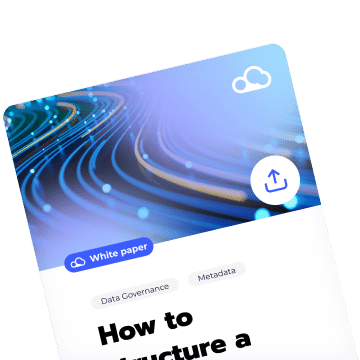Data lineage is something all businesses should be aware of. You likely have a lot of data floating around, coming in, being stored, etc. Having easy access to it, understanding where it came from, knowing that it is safely secured, and more are all things your team needs to be assured of. As with many things, an automated system is far superior to executing lineage manually. However, there are numerous tools and software available where automated lineage is concerned.
Below, you’ll see several data lineage examples. You may find them useful when you start thinking about automated data lineage systems.
What Is data lineage?
Data lineage is a process by which, covering the lifetime of data, its flow is tracked. It can tell you where the data came from, where it’s stored, if/how it has changed over time, and much more. If you’re wondering what location the data may ultimately be destined for, data lineage can inform you of this as well. It would be difficult, indeed, to track data through its various BI systems, transformations, twists and turns, etc., without a data lineage. Lineage can be executed manually, but not without considerable time, money, and training. Far preferable today are the many software choices/tools available. Specific software options allow particular data lineage techniques to be utilized/accessed.
When looking at software options, be sure to compare your needs and purposes to the benefits and features of each software choice and its tools. Check out the following data lineage use cases to better understand how the process can benefit companies and industries.
#1: Self-service data management
Data Scientists – and data users in general – can be armed with the right solution when they have the power of up-to-date information retrieval. Additional benefits are offered through this use of detailed maps.
#2: Data virtualization
Data continues to increase and grow in complexity. But now, in one place, multiple-source data is being consolidated by many enterprises. Additionally, data virtualization technologies are being explored. This technology brings together data from a variety of sources and presents it in a unified interface, allowing users to quickly and easily access the data they need. Data virtualization also simplifies and streamlines the data management process, saving time and resources.
#3: Cloud migration
Increasing challenges and a higher focus on modernization are some of the reasons IT professionals are utilizing lineage for cloud migration. Through this, they can speed up migration processes with fewer resources. Data lineage has also helped address challenges such as migrating data without breaking another and minimizing external dependencies.
#4: Regulatory compliance
Over the past few years, there has been a rapid increase in regulations, putting pressure on different organizations. This is especially difficult for those who collect and store confidential customer data. Some regulations include CCAR, CCPA/CPRA, GDPR, HIPPA, BASEL, and more. Through data lineage, companies can possess and manage personal information by following the regulations. They can also produce, audit, map, identify data, and meet all requirements.
#5: Data pipeline observability
By focusing on the data infrastructure, lineage addresses some common challenges. In addition to solving pipeline problems, it identifies root causes with speed and accuracy. In the design phase, unfortunate incidents can be prevented thanks to data lineage. In the testing and implementation phase, they can also be identified to reduce maintenance costs and achieve higher productivity.
#6: Incident prevention via impact analysis
Significant cost reductions and higher productivity are achieved when organizations use better incident prevention strategies. In the early design phase process, for all plan changes, impact analysis is extensively used by today’s most successful companies.
Are any of the above-stated scenarios similar to your company and/or your industry? If so, data lineage could be your new best friend!
Data lineage examples & techniques
The following are just a few examples and techniques of data lineage:
- Lineage by pursing
- Self-contained lineage
- Lineage by data tagging
- Pattern-based lineage
Conclusion
In conclusion, data lineage has become a significant component in how businesses manage, analyze, and secure their vast amounts of data. It streamlines various operations, such as self-service data management, data virtualization, and cloud migration. Moreover, it assists in adhering to regulatory compliance, enhancing data pipeline observability, and proactively preventing incidents via impact analysis. The techniques and examples given, including lineage by pursuing, self-contained lineage, lineage by data tagging, and pattern-based lineage, offer a glimpse into the vast possibilities that data lineage offers.
Discover the benefits of creating an intuitive data catalog to fit your needs! Request a demo of DataGalaxy’s Data Knowledge Catalog, an all-in-one data catalog that offers out-of-the-box actionability with fully customizable attributes, powerful visualization tools, standardized business glossaries, and AI integration to help organizations easily document, link, and track all their metadata assets on one dynamic platform.





